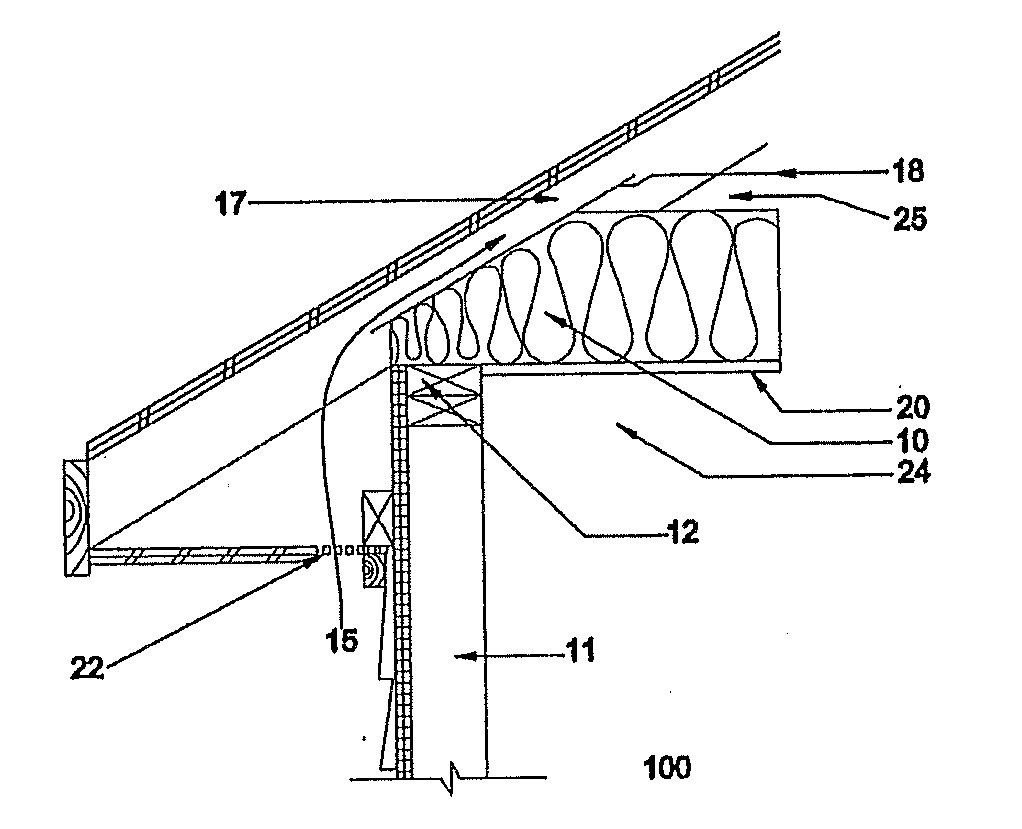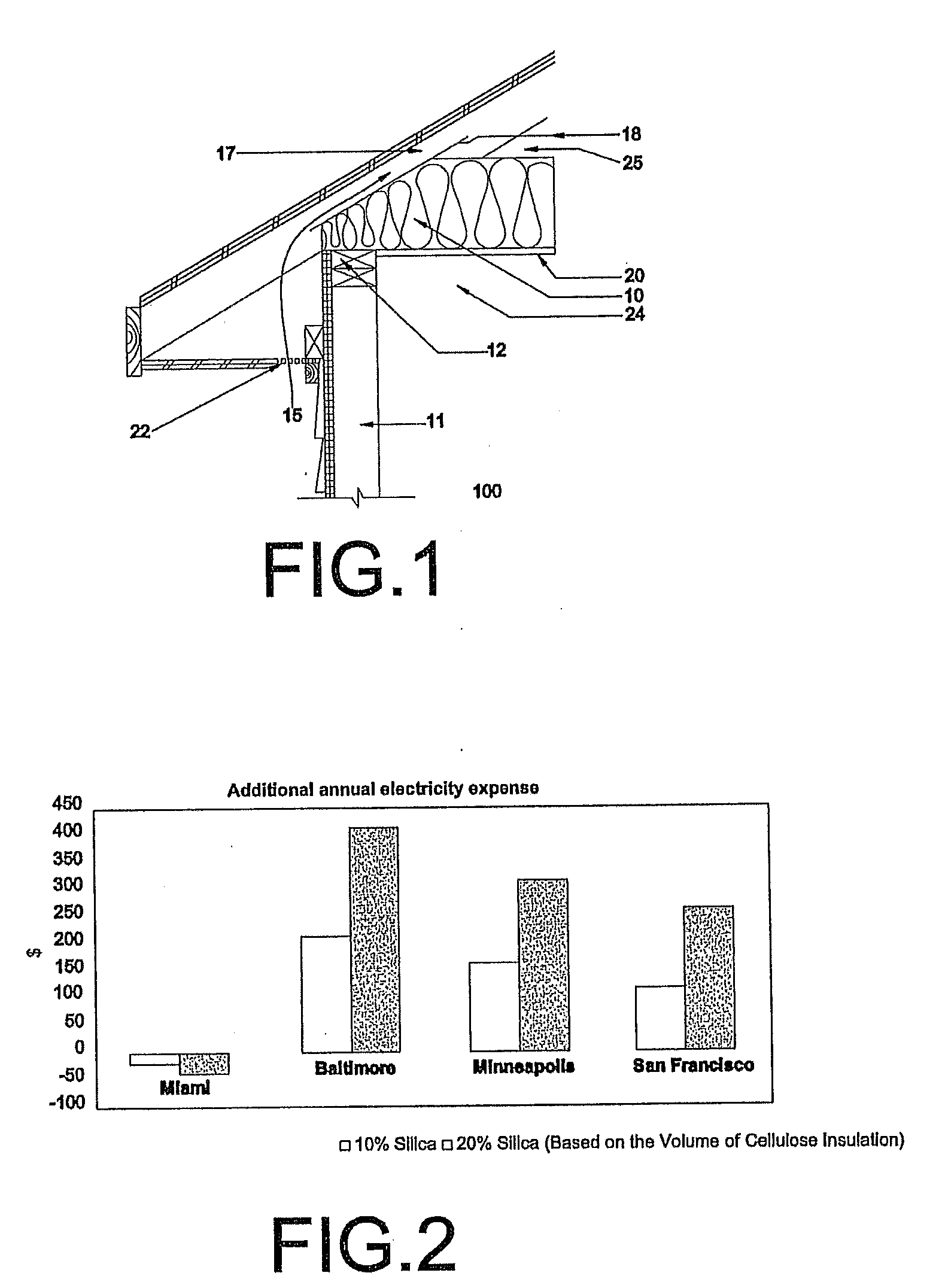Attic and wall insulation with desiccant
a technology of desiccant and attic insulation, which is applied in the field of attic and wall insulation with desiccant, can solve the problems of increasing the cooling load, difficulty in achieving a continuous air infiltration barrier and thermal insulation barrier at the interior ceiling level, and moisture desorbed by wood attic framing materials, etc., and achieves the effect of reducing the total amount of cooling energy and reducing the amount of cooling energy
- Summary
- Abstract
- Description
- Claims
- Application Information
AI Technical Summary
Benefits of technology
Problems solved by technology
Method used
Image
Examples
Embodiment Construction
[0030]One of several alternative methods, proposed herein, is to change roof insulation characteristics by mixing desiccant material with a porous insulation material, such as fiber glass or cellulose insulation. In general, there are two main advantages to this process. The first is to add more thermal mass to the ceiling insulation when the desiccant adsorbs moisture which can lead to possible load shifting from peak to off-peak hours. The second is to reduce attic air moisture levels. The disadvantage with this method of adding a desiccant is that the thermal resistance of the insulation decreases somewhat due to the higher thermal conductivity of the desiccant compared to fiber glass or other insulation.
[0031]In addition to the general advantages and disadvantages of the desiccant insulation mixture mentioned above, one of the most important features of using the ceiling mixture is to add more moisture adsorption capacity. The moisture adsorption from the attic and desorption to...
PUM
 Login to View More
Login to View More Abstract
Description
Claims
Application Information
 Login to View More
Login to View More - R&D
- Intellectual Property
- Life Sciences
- Materials
- Tech Scout
- Unparalleled Data Quality
- Higher Quality Content
- 60% Fewer Hallucinations
Browse by: Latest US Patents, China's latest patents, Technical Efficacy Thesaurus, Application Domain, Technology Topic, Popular Technical Reports.
© 2025 PatSnap. All rights reserved.Legal|Privacy policy|Modern Slavery Act Transparency Statement|Sitemap|About US| Contact US: help@patsnap.com



